The Race to Build a Real-Life Version of the “Star Trek” Tricorder
Can a $10 million prize turn a sci-fi device into real technology?

Tatiana Rypinski is maybe two bites into her salad when she realizes it’s time for her next meeting. She gets to her feet and heads to the Biomedical Engineering Design Studio, a hybrid of prototyping space, wet lab, and machine shop at the Johns Hopkins University’s Homewood campus, in Baltimore. Rypinski and a few of her colleagues gather near some worktables with power outlets dangling from the ceiling. A tool cart is in one corner, a microscope in another. Two 3-D printers sit idle along a wall. The students have agreed to meet me here to discuss their work on a project whose goal is not just inspired by science fiction—it actually comes straight out of “Star Trek.” They want to build a medical tricorder.
In 1966, “Star Trek” introduced the tricorder as, in essence, a plot device. Like the transporter, which could “beam” people between starships and planets without asking the audience to sit through lengthy landing sequences, the tricorder could rapidly diagnose medical conditions and suggest treatments, keeping the story moving. With a wave of this fictional device, a Starfleet crew member could get a comprehensive medical analysis without having to be admitted to the ship’s sick bay.
Here in the real world, though, if you have a nonemergency situation, you may wait days—weeks, in some places—to see a physician. And if you need laboratory tests, receiving a diagnosis can take even longer. A lot of waiting is involved, and waiting is the last thing you want to do when you’re sick. It’s even worse in the developing world, where a shortage of medical facilities and personnel means that seeing a doctor may not be an option at all. What we need is a tricorder. A real one.Rypinski is the leader of Aezon, one of the teams participating in the Qualcomm Tricorder XPrize. The competition launched in 2012, when the XPrize Foundation and U.S. chipmaker Qualcomm challenged innovators from around the world to develop a portable, consumer-friendly device capable of diagnosing a comprehensive set of medical conditions. More than 300 teams registered, and after a series of reviews, the organizers selected 10 finalists, announced last August.
This month, the final phase of the competition starts. Each finalist team was expected to deliver 30 working prototypes, which will now undergo a battery of tests with real patients. Prizes totaling US $10 million will go to the winner and two runners-up, to be announced early next year, when “Star Trek” will be celebrating its 50th anniversary.
Aezon is the youngest finalist team: All of its members are undergraduates at Hopkins. Some have never even seen the original “Star Trek” episodes. “My dad is a huge fan, though,” one student tells me. For her part, Rypinski is unfazed. “This is something we’re doing because we love it,” she says, “and I think that sets us apart.”
The other finalists include high-profile startups like Scanadu, in Silicon Valley, and well-funded medical companies like DNA Medicine Institute, in Cambridge, Mass., which has a partnership with NASA. Four teams are based in the United States, and the other six are from Canada, England, India, Northern Ireland, Slovenia, and Taiwan.
Their tricorders won’t be all-powerful portable scanners like those in “Star Trek,” but they still must demonstrate some impressive capabilities. They’ll have to diagnose 13 medical conditions, including anemia, diabetes, hepatitis A, leukocytosis, pneumonia, stroke, tuberculosis, and urinary tract infections. In addition, teams choose three additional conditions from a list that includes food-borne illness, melanoma, osteoporosis, whooping cough, shingles, mononucleosis, strep throat, and HIV. And their systems must be able to monitor vital signs like temperature, blood pressure and oxygen saturation, heart rate, and respiratory rate—not only in real time but for periods of several days as well.
The goals may seem impossibly difficult, but XPrize believes they can be achieved, thanks to a host of relatively recent technological advances. These include sophisticated machine-learning methods applied to medical data, cost-effective microfluidic and other lab-on-a-chip systems, and faster and cheaper laboratory tests such as rapid polymerase chain reaction (PCR) for DNA analysis. Just as important, there’s the popularization of personal genomics services and fitness-tracking gear, exemplifying people’s desire to learn more about their bodies and health.
Because the enabling technologies already exist in some form today, much of the challenge is about integrating them into a compelling system, says Grant Campany, senior director of the Qualcomm Tricorder XPrize. A tricorder isn’t intended to keep you out of your doctor’s office: It won’t be able to treat any of the conditions it can identify. But it will be able to give you a fast and detailed picture of what may be the matter with you—which is much better than googling your symptoms and sorting through dubious medical websites, as many people do today.
Campany says the diseases chosen for the challenge are often not diagnosed early enough and therefore lead to a significant number of deaths and hospitalizations: “The goal here is to try to identify things as soon as possible so that people don’t wait and get sicker.”
Tricorder XPrize: The Final Frontier
This month, the US $10 million Qualcomm Tricorder XPrize enters its final phase. The 10 finalists listed below are expected to deliver a set of working prototypes to be tested with real patients. The winner will be announced early next year.
-
Aezon (Rockville, Md.)
Students from Johns Hopkins University are building a three-component system that consists of a smartphone app, a vitals monitoring device worn around the neck, and a lab unit to analyze samples of blood, urine, and saliva.
-
Cloud DX (Kitchener, Ont., Canada)
The private company’s dozen or so engineers and scientists are developing Vitaliti, a vitals monitor worn around the neck. The team’s tricorder will also include an earpiece and lab analysis unit with smartphone integration.
-
Danvantri (Chennai, India)
Backed by technology firm American Megatrends India, Danvantri (named for the Hindu god of medicine) is augmenting its commercially available B.OL.T. electronic blood pressure cuff with a suite of modular sensors for its tricorder.
-
DMI (Cambridge, Mass.)
DMI plans to integrate its advanced diagnostic system (which won XPrize’s Nokia Sensing XChallenge in 2014 and will undergo trials on the International Space Station) with a wearable vitals patch.
-
Dynamical Biomarkers Group (Zhongli City, Taiwan)
Sponsored by smartphone manufacturer HTC, DBG is a team of Taiwanese and U.S. engineers and physicians. It is building a tricorder based on a sensor suite and imaging system to analyze vitals and samples of blood and urine.
-
Final Frontier Medical Devices (Paoli, Pa.)
Three brothers and a sister—with backgrounds in medicine, engineering, and computer science—form the core of Final Frontier. Their tricorder includes a handheld device that uses optical sensors to avoid the need for blood samples.
-
MESI Simplifying Diagnostics (Ljubljana, Slovenia)
MESI is a startup founded by a group of physicians and engineers. Its tricorder consists of a medical-grade wristband, a smartphone app, and a few diagnostic modules for identification of specific diseases.
-
Scanadu (Moffett Field, Calif.)
With Scout, a handheld vitals scanner, Scanadu reached a record $1.6 million in crowdsourced funding in 2013. For its XPrize tricorder, the team may enhance Scout and combine it with a wearable device and a lab test kit.
-
SCANurse (London)
A diagnostic medical manufacturer, SCANurse is hoping to build a tricorder that is “minimally invasive,” using sensors and computer vision whenever possible instead of asking patients to provide blood or urine.
-
Zensor (Belfast, Northern Ireland)
The team is focusing on a wearable electrocardiogram sensor that also measures vitals like respiration rate and temperature. Diagnostics on blood and urine will be performed by a miniature microspectroscopy lab.
It’s late February, and Aezon is reaching a critical phase of its project. Rypinski tells me the team has a number of working components but now needs to combine them into a complete system that can be delivered to the organizers in just three months. There’s a limited amount that she’s willing to share with me about her team’s tricorder; Aezon, like most other XPrize competitors, is keeping its technologies heavily under wraps.
Still, it’s safe to say the various systems will likely work in a similar fashion. How? Say you’re feeling ill. Most tricorders will probably include an application running on a phone or tablet as the main user interface. The app—a kind of AI doctor—will start by asking you a series of questions: Do you have a headache? Are you feeling dizzy? Did you vomit? It may also ask you about your age, weight, height, and medical history.
Next, it will collect your vitals, measured by a sensing device you wear on your body—a fitness tracker–style wristband, or maybe an electronic necklace. (The competition calls for this monitor to be able to gather data for 72 hours, even while you sleep.) Depending on your answers and vital signs, the app may ask you to perform some additional tests. These you will do using yet another piece of hardware, a kind of “lab in a box” unit, which will be able to perform certain diagnostic tests using samples of saliva, urine, or blood.
Finally, after receiving the test results and crunching all the other data, the app will give you a diagnosis and direct you to more information such as reliable medical resources or support groups for people with that disease. It may also include a “call your doctor” button, or it may even dial an emergency number.
Some teams are building devices that you could mistake for a “Star Trek” prop. Scanadu, before it joined the XPrize competition, ran a highly successful crowdfunding campaign to develop Scout, a sleek white disc you place against your forehead. Packed with sensors, the little device measures heart rate, skin and core body temperature, respiration rate, blood pressure and oxygen saturation, and electrocardiogram (ECG) data. For the XPrize, it’s unclear whether the company will use the same device or enhance it, perhaps coupling it with a wearable accessory that can gather data over longer periods.
Canadian team Cloud DX has designed a futuristic-looking plastic collar to measure vital signs. The U-shaped device wraps around your neck, and its extremities have electrodes that sit over your chest to record your heart’s electrical activity. Its tricorder also includes a lipstick-size scanning wand for skin and ear exams that its creators say “Dr. McCoy would be proud of,” referring to the USS Enterprise’s chief medical officer.
Sitting in the Biomedical Engineering Design Studio, Rypinski and her colleagues look absolutely exhausted, and it seems like they’re running on little more than determined enthusiasm. She tells me that after reading about the tricorder competition in 2012, she sent e-mails to different departments at Johns Hopkins—known for its strong biomedical engineering program—to see if anyone was interested in forming a team. A lot of people showed up for the first few meetings. The hard part was finding people who would come back. “Over time, the people who were really interested in the project stuck with it,” she says, “and here we are.”
For the competition, Aezon adopted a divide-and-conquer approach. The 30 or so team members formed small groups to investigate individual diseases and determine which data they needed to successfully diagnose each of them.
Two of Rypinski’s colleagues—Alex Kearns, a mechanical engineering student, and Akshay Srivatsan, a computer science student—tell me they have designed a smartphone-based diagnostic app that works “the way a doctor thinks.” To do that, the app relies on a machine-learning technique known as a naive Bayes classifier, which is commonly used by researchers building such medical-diagnostic applications. The idea is to adjust the probability of a given diagnosis every time the system receives a new piece of information, which may include symptoms, vitals, or lab results.
To gather vital signs from patients, some Aezon team members developed a monitoring device to be worn around the neck. Its creators decided to form an independent company, Aegle, to raise funds and market the monitor separately after the competition.
For some of its tests, Aezon has partnered with the Johns Hopkins BioMEMS & Single Molecule Dynamics Lab. The team is hoping that some micro- and nanoscale molecular analysis methods recently developed at the lab could be used in a fast and cheap diagnostic test of blood samples.
For other tests, though, the team is turning to simpler technologies. Cyrus Zhou, a biophysics major, and Ned Samson, a mechanical engineering student, are working on a test for leukocytosis, which is an elevated white blood cell count. “Initially, we were going to make a microfluidic device,” says Samson. “But from the people we talked to, it’s like a Ph.D. to do that.”
The students found a commercially available chip that causes blood cells to spread out, making them easier to see. They’re now trying to combine the chip with a set of lenses that can act as a simple and inexpensive optical microscope. Their plan is to use the camera on the smartphone and Aezon’s app to count white blood cells with computer vision. “It’s got everything,” says Samson. “It’s small, it’s cost effective, it’s doable.”
Between June and December of this year, XPrize will assess the teams’ prototypes at the UC San Diego Medical Center. The effort will involve recruiting nearly 500 people—three consumer testers per device, per condition—to obtain a representative result for each condition with each tricorder.
The winning team will be the one that has the highest health assessment score (based on the tricorder’s ability to correctly identify the condition that the user has) while also being among the five teams with the highest “consumer experience” score (based on the tricorder’s aesthetic appeal, ease of use, and functionality).
“These devices must be able to function in such a way that a typical person with some understanding of smartphones should be able to understand how to operate them,” says Campany, the Tricorder XPrize director. “We’ve put 45 percent of the score on the consumer experience, because that’s how important we think it is.”
This assessment won’t be a clinical trial, which would be far more difficult. Even if some of the tricorders work well, there will still be a long list of questions that will need to be answered before the devices can be commercialized. Are they safe? Do they keep a user’s medical data private? Who’s liable if there’s a misdiagnosis?
A month after my visit to Johns Hopkins, I check in with Rypinski to see how things are going. Aezon has finalized the design of its tricorder and is now tweaking its components to make sure they work well together and offer a cohesive user experience. Rypinski doesn’t know how she will feel when the prototype finally ships to XPrize—and there’s nothing more that her team (or any of the other teams) can do, besides wait for the results of the consumer testing. Right now she can barely find time to eat lunch.
“We have a really tight deadline to meet,” she says. “After that, we’ll have all the time in the world.”
Tricorder stand-in
Your Smartphone
Can a smartphone tricked out with gizmos and apps replace a doctor’s traditional diagnostic tools? We’ll soon find out. Capitalizing on the impressive sensors and processing power in today’s smartphones, startups are turning them into mobile diagnostic and monitoring instruments for both consumers and health care workers. As capable as some of these innovations already are, it’s unclear whether they will pass muster with government regulators, which is why many of their makers are not yet touting them as bona fide medical devices. —Sarah Lewin
Pediatrics
Baby Vital-Signs Checker
The Owlet Smart Sock keeps tabs on an infant’s heart rate and blood-oxygen levels. LEDs shine red and infrared light through the foot, and sensors measure how that light is absorbed by oxygen-carrying hemoglobin molecules in arterial blood. The sock transmits this data over Bluetooth to a base station and to the smartphone of the nearby (and presumably anxious) parent.
Price: US $250 (available for preorder)
Ophthalmology
Eye Examiner
The Portable Eye Examination Kit (PEEK) adds a lens adapter to the smartphone’s camera. Health care workers in remote locations can then use the phone to scan a patient’s retina for disease and to check for cataracts. Associated smartphone apps can be used to test the patient’s vision.
Price: £70 (available for preorder; not available in the United States)
Otology
Eardrum Inspector
The Oto turns an iPhone into an otoscope that uses the phone’s camera to view the eardrum at high magnification. With the home version, parents can send images of their children’s eardrums to on-call clinicians to diagnose middle-ear infections. A pro version allows doctors to share images with their patients.
Price: US $79 for the Oto Home (currently available only in California); $299 for the Oto Clinic
Cardiology
An ECG in Your Phone
With the AliveCor Heart Monitor, a patient with a heart condition can collect a personal electrocardiogram, a record of the heart’s electrical activity. While the patient touches electrode-carrying sensors attached to the phone’s case, an associated app displays the patient’s heart rate and flags irregular rhythms known as atrial fibrillations. The app also transmits data to the patient’s doctor.
Price: US $75
Illustrations: James Provost
Psychology
Something to Watch Over You
Mental-health clinicians can use the Mobile Therapy app to keep tabs on patients between sessions. The app uses self-reports, linguistic analysis, and smartphone sensors to gather information about the patient’s feelings, behaviors, movements, and interactions with other people. It then relays this information to the clinician, who can look for trends and spot trouble signs.
Price: US $480 per year for a clinician
This article originally appeared in print as “The Race to Build a Real-Life Tricorder.”
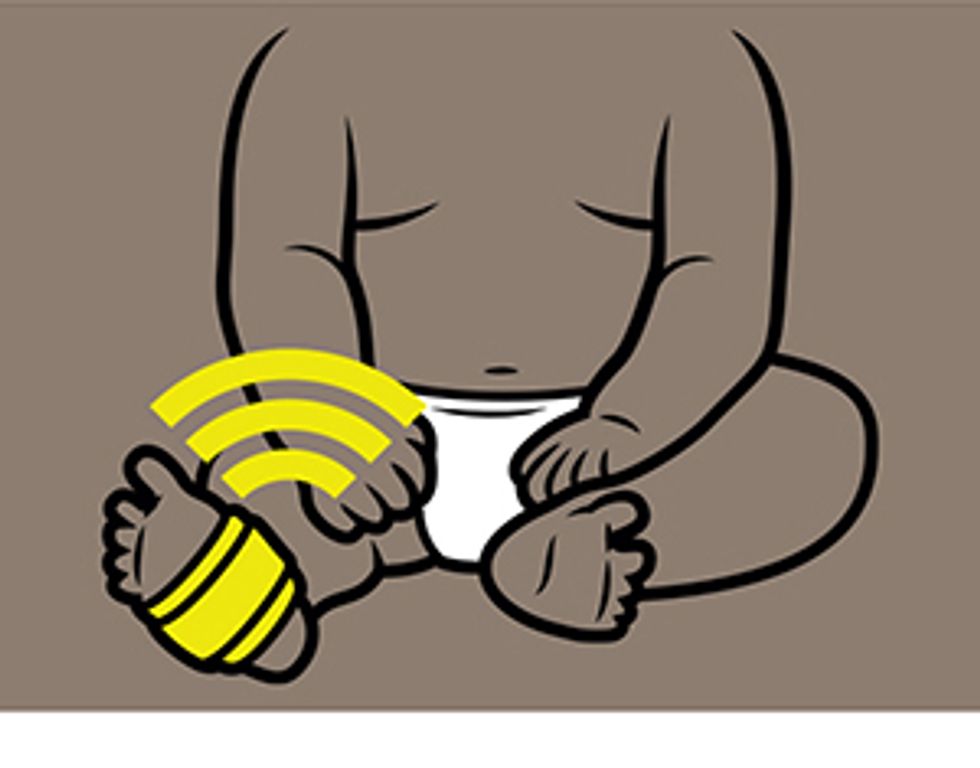
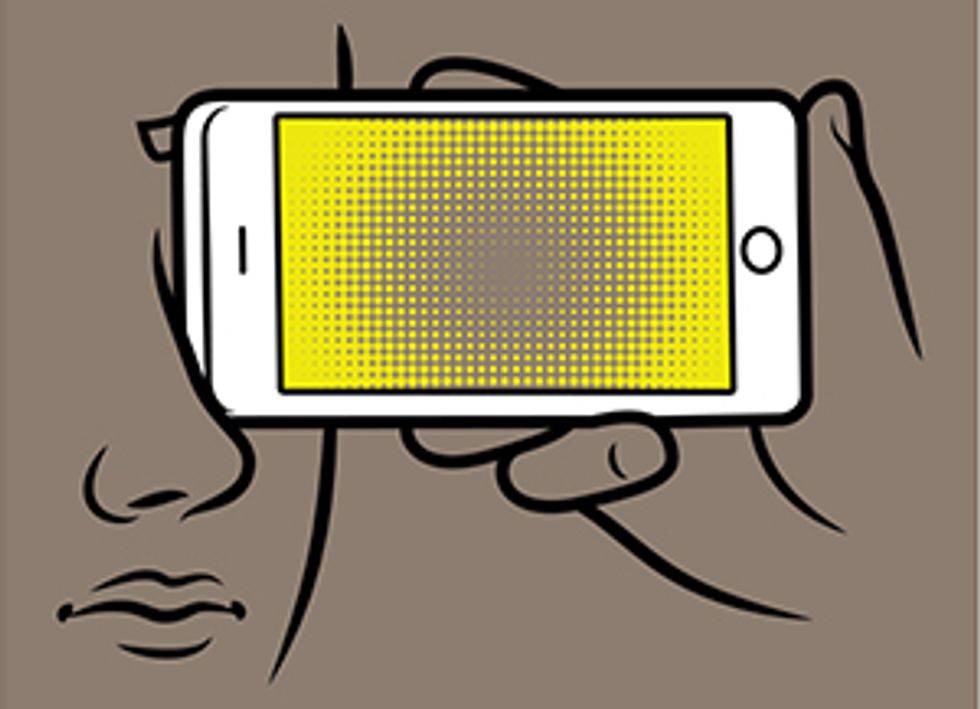
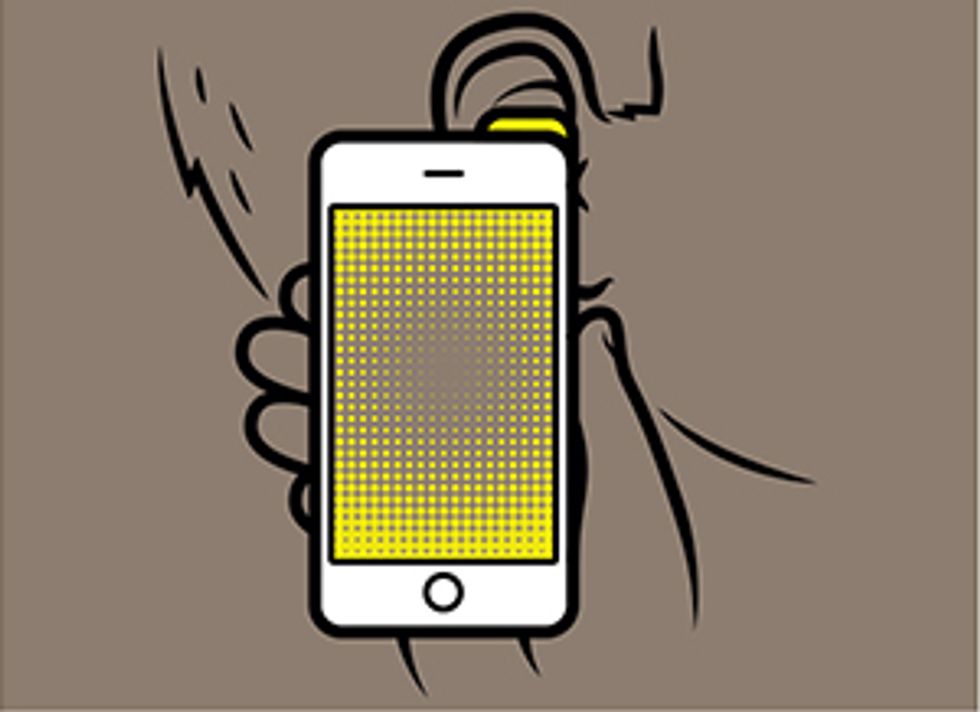
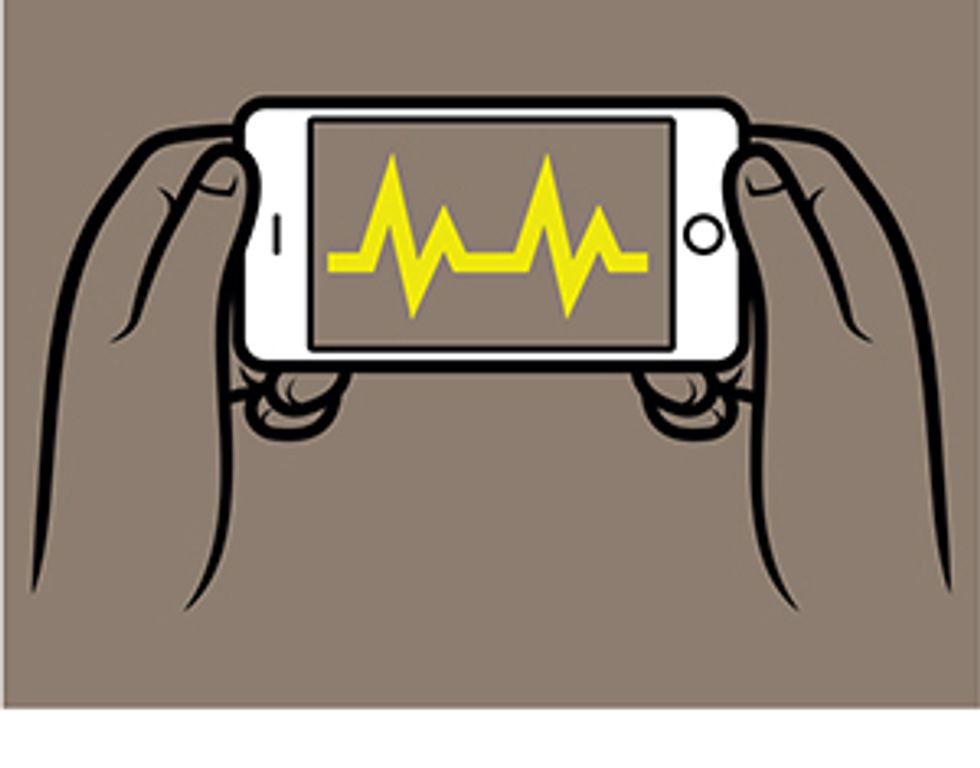
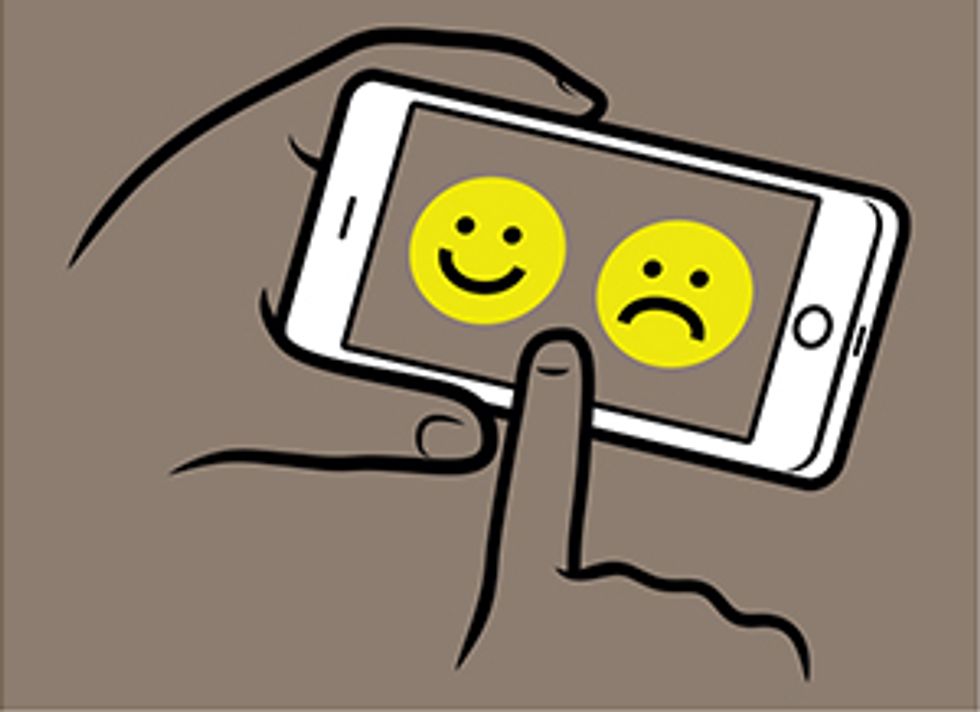 Illustrations: James Provost
Illustrations: James Provost

